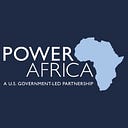Energizing Gender Equality and Social Inclusion in Nigeria
Nigeria’s government recognizes the value of diversity and the necessity of including socially vulnerable groups — women, people with disabilities, minority tribes, youth, those who live in remote rural areas — if the country is to reach its potential.
However, this understanding has yet to reach all levels of the Nigerian power sector where diversity is largely perceived to cover ethnic and regional inclusion.
To bridge this gap, Power Africa’s 2022 groundbreaking Social Inclusion and Diversity in Nigeria’s Power Sector study examined the key factors affecting exclusion in Nigeria’s power sector and provided recommendations on improving workforce practices, social inclusion, diversity, and recruitment practices. Building on the finding, the Power Africa hosted a two-day training for Gender Equality and Social Inclusion (GESI) Champions to serve as advocates for change within their organizations.
Over 50 participants from eight of Nigeria’s energy sector ministries, departments, and agencies (MDAs), as well as four civil society organizations, came together to learn actionable ways to apply a GESI lens to policies, practices, and processes that foster inclusivity in the public sector workforce and programming.
“This training was very insightful; I have learnt the importance of gender disaggregated data and I feel better equipped to champion gender within my organization. Thank you for putting this training together,” said participant, Ms. Idara Ekwo, Managing Partner of EJV Consultancy.
Want to implement GESI in your organization? Below five steps to help mainstream gender equality and social inclusion in your organization’s practices:
FIVE EFFECTIVE STEPS TO MAINSTREAMING GENDER EQUALITY AND SOCIAL INCLUSION IN ENERGY SECTOR MINISTRIES, DEPARTMENTS, AND AGENCIES
1. Conduct a Gender Equality and Social Inclusion Analysis
- A GESI analysis exercise is the first step to challenge inequality and discriminatory norms and shore up inclusion within organizational ranks. It allows you to explore dimensions that affect how individuals and groups engage, examine existing legal and institutional practices and cultural norms, and increase opportunities for excluded people.
- With this baseline, decision-makers can be informed on how access to assets and resources determine which groups dominate the workforce and which remain underutilized because they may wield lower levels of influence.
- While there are many ways to conduct a GESI analysis, for an example see USAID’s tips.
2. Adopt Gender Equality and Social Inclusion Responsive Budgeting
- Developing a budget is key to allocating time and money to priority areas.
- GESI Responsive Budgeting (GRB) does not imply allocating additional resources or separate budgets for men and women — you just need to understand their different priorities to ensure budget allocation in the most impactful manner.
- By adopting gender-responsive budgeting considerations, agencies can allocate financial resources to mitigate unintended consequences.
3. Monitor and Evaluate Activities
- To gauge the effectiveness of policies and budgeting, and promote GESI responsive practices within the power sector, organizations should monitor and evaluate what they have set out to do. As a starting point, GESI indicators like those developed in Power Africa’s Gender and Energy Indicator Catalog, are crucial.
- For example, if you designed a GESI objective to deliver electricity to gender-based violence (GBV) resource centers, it requires a corresponding indicator to monitor effectiveness by measuring number of facilities electrified or percentage increase in daily GBV survivor-support meetings.
- A precise indicator allows you to measure and collect data on gender, age, and disability status, improving management and budgeting decisions for greater positive impact.
- Government officials can also use disaggregated data to gain insight on social exclusion and bring about more equitable policies.
4. Promote Gender-Responsive Communications
- Organizations can mainstream GESI in communications by using gender-neutral words and images depicting women, persons with disabilities, and members of marginalized groups as empowered, active contributors to society.
- Using inclusive words such as line worker, engineer, or chairperson can break down stereotypes and open the way for more diverse role models.
5. Implement Human Resources Practices through a Gender Equality and Social Inclusion lens
- While developing programs and policies with a GESI lens demonstrates an organization’s commitment to inclusivity, remember to practice what you preach!
- Energy sector agencies should attract and retain diverse talent pools to bring wider perspectives into their work and develop effective programming for all constituents.
- To help your organization promote equity in the workforce, look to USAID’s Delivering Gender Equality, a Best Practices Framework for Male-Dominated Industries.
Additionally, these resources can support your organization’s transition to gender equality and social inclusion programming:
- https://www.usaid.gov/e-learning/gendev/gender-101/#/
- Power Africa Disability Inclusion Toolkit For Nigeria Power Sector
- Power Africa Gender and Social Inclusion Consideration Checklist
- Engendering Industries: Strengthening Gender Equality in Male-Dominated Industries
- Promoting Gender Smart Investing in Nigeria
Learn more about our gender work and our work in Nigeria
